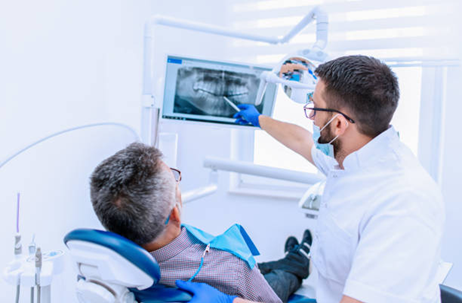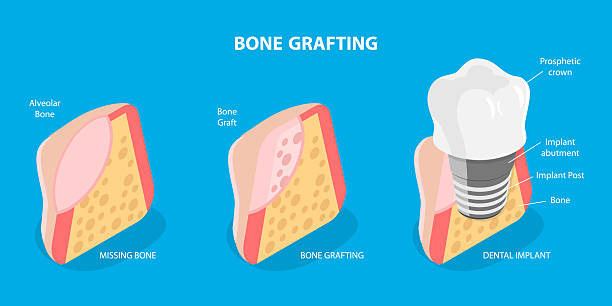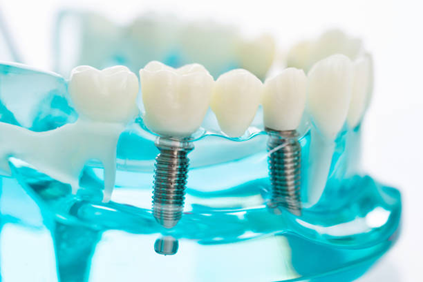
Many patients with low bone density feel they are not a candidate for dental implants. But no longer is that the case with advanced procedures like guided implant surgery with low bone density.
Dr. Manjul Jain, a seasoned dentist in Andheri, Mumbai, provides guided dental implant surgery at Metro Dental Specialty Clinic. Experienced in implantology, he has helped many patients, including challenging cases where low bone density was a consideration.
“For patients with low bone density, it’s important to remember that there are advanced solutions that can make dental implants a reality. With the precision of guided implant surgery, we can safely restore lost teeth, even in challenging conditions, giving you a functional and natural-looking smile.” – Dr. Manjul Jain
How exactly does it work?
What is Guided Implant Surgery?

Guided implant surgery is a contemporary procedure where 3D imaging and computer-guided technology are applied to plan and precisely place dental implants. The use of a computerized guide during surgery makes the procedure minimally invasive, shortening surgery time as well as recovery. The precision offered by this technique ensures that implants are placed in the ideal position, providing better long-term results.
Why Bone Density Matters in Dental Implants
Bone density plays a crucial role in the success of dental implants. The implant needs to fuse securely with the bone in a process called osseointegration. If the bone is too soft or thin, the implant may fail to integrate properly, leading to complications. In low bone density situations, traditional implant methods may not be suitable, requiring advanced techniques like guided implant surgery to ensure successful placement.
Challenges of Low Bone Density in Implant Placement

Low bone density presents several challenges:
- Lack of Solid Bone Support: It’s difficult for the implant to stay in place without solid bone.
- Higher Chances of Implant Failing: If not well integrated, the implant can become loose in the future.
- Limited Treatment Options: Virtually all traditional implant methods require a substantial amount of bone, restricting options for patients with bone loss.
However, guided dental implant surgery addresses these issues effectively by using advanced imaging and planning techniques. CBCT guided implant surgery provides a 3D view of the bone structure, enabling the dentist to make precise decisions about where and how to place the implants, even in difficult conditions.
How Guided Implant Surgery Overcomes These Challenges
Guided implant surgery eliminates the pitfalls of low bone volume with:
- Accurate planning: Computer-aided designs ensure the placement of the implant in the most stable parts of the bone, even in areas of low bone density.
- Minimally invasive surgery: It minimizes trauma to adjacent tissues, allowing for early recovery.
- Customized treatment: It allows the dentist to specially adapt the procedure to patient-specific bone anatomy in order to achieve higher success rates even for low bone density cases.
Now, let’s explore the additional techniques that help boost the success of guided surgery.
Techniques Used Alongside Guided Surgery for Low Bone Density

Besides the use of guided surgery, there are additional methods employed for increased success in low bone density instances:
- Bone grafting: It involves the utilization of bone material in the affected area, boosting bone volume and bone density for implant placement.
- Sinus lift: A sinus lift may be performed to make more space and height in the upper jaw, aiding in implant placement.
- Ridge expansion: It expands the jawbone to achieve additional surface area for the placement of the implant.
Look at the benefits below.
Benefits of Guided Implant Surgery in Low Bone Density Cases

Advantages of guided dental implant surgery in low bone density patients are as follows:
- Better success rates: The accuracy of the procedure ensures higher incidence of implant integration.
- Rapid recovery: Since it is minimally invasive surgery, recovery is fast and fewer complications.
- Less discomfort: With accurate planning, the surgery causes less trauma to the surrounding tissues, leading to a more comfortable experience.
- Better appearance and function: Optimal-positioned implants yield a superior functional and aesthetic outcome.
Are you wondering if this technique is right for you?
Who Can Benefit from Guided Implant Surgery?
Anyone with low bone density who has been told they are not a candidate for dental implants can benefit from guided implant surgery with low bone density. Whether you have experienced bone loss due to age, trauma, or other health conditions, guided dental implant surgery can offer a solution tailored to your unique needs. Dr. Jain’s clinic specializes in personalized care, ensuring the right treatment for each individual patient.
This is what you need to do for an easy recovery.
Recovery and Aftercare Tips
Proper aftercare is necessary for easy recovery after computer-guided implant surgery. Important things to bear in mind are:
- Follow post-operative instructions: Adhere to the dentist’s instructions for care and cleaning.
- Do not eat hard food: Consume soft food to prevent dislodgment of the implants.
- Manage pain: Moderate pain is controlled through use of over-the-counter pain medication.
- Follow up on appointments: Regular check-ups ensure that recovery is on track.
Conclusion
Guided implant surgery with low bone density provides hope for individuals who might have been deemed unsuitable for dental implants in the past. Technology and methods continue to develop such that even individuals with low bone mass are able to achieve successful implant placements. Seeking professional consultation from a qualified dentist such as Dr. Manjul Jain who utilizes these cutting-edge methods can lead to a healthier, more confident smile.
FAQs
1. What is the success rate of guided implant surgery?
2. How long does recovery take after the procedure?
3. Can I eat normally after the surgery?
References
https://pmc.ncbi.nlm.nih.gov/articles/PMC11591606/
https://pmc.ncbi.nlm.nih.gov/articles/PMC9967359/
Disclaimer: The information shared in this content is for educational purposes and not for promotional use.
